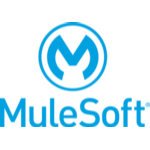TechnologyCounter provides genuine, unbiased real user reviews to help buyers make informed decisions. We may earn a referral fee when you purchase through our links, at no extra cost to you.
List of 15 Best API Design Tools
Showing 1 - 15 of 19 productsAmazon API Gateway is the game-changing solution for seamless connectivity between clients and backend services. With intuitive features and dynamic performance, this powerful tool streamlines the integration process for developers, providing a strea...Read Amazon API Gateway Reviews
Microsoft Azure is a cloud computing platform that provides a vast range of services for businesses to build, deploy, and manage applications and services through a global network of data centers. With its flexible and scalable solutions, Azure allow...Read Microsoft Azure Reviews
WSO2 API Manager is a and innovative software that allows businesses to seamlessly manage, monitor, and distribute their APIs to a diverse range of consumers. With its user-friendly interface and robust features, WSO2 API Manager streamlines the API...Read WSO2 API Manager Reviews
Postman Pro is a software that streamlines the process of API development and testing. As a copy writer, I am excited to introduce this powerful tool that simplifies APIs for developers and promotes collaboration within teams. With its user-friendly...Read Postman Pro Reviews
RAML is an essential software for businesses looking to streamline their API development process. This concise and user-friendly solution allows for seamless documentation, testing, and collaboration among team members. With RAML, businesses can easi...Read RAML Reviews
Conektto is a all-in-one software solution that simplifies and streamlines your daily workflow! With its user-friendly interface and powerful features, Conektto helps businesses of all sizes stay organized is a . Say goodbye to complexity and hello t...Read Conektto Reviews
Apigee Edge is a API management platform that enables businesses to easily design, deploy, and manage their APIs. With its robust features interface, Apigee Edge streamlines API development and facilitates seamless integration, making it the go-to ch...Read Apigee Edge Reviews
Apitive Studio, your one-stop solution for all your digital design and development needs. With our innovative and user-friendly platform, we strive to bring your ideas to life and elevate your online presence. From creating stunning websites to devel...Read Apitive Studio Reviews
Mockoon is a user-friendly and powerful tool for creating and testing API and web services. It offers a seamless experience for developers and beginners alike, providing a streamlined interface for building and simulating HTTP requests. With Mockoon,...Read Mockoon Reviews
Xano is a software that revolutionizes the way businesses create and manage their web and mobile applications. With its user-friendly interface and customizable features, Xano empowers users to build robust and scalable applications without the need...Read Xano Reviews
SwaggerHub is a platform that streamlines the collaboration and development process for APIs. As is a solution for API lifecycle management, SwaggerHub offers a user-friendly interface and robust features to help teams build, document, and share APIs...Read SwaggerHub Reviews
Runscope is a tool that allows businesses to monitor and debug their APIs in real-time. With its user-friendly interface and customizable features, Runscope is the go-to solution for companies looking to ensure the reliability and efficiency of their...Read Runscope Reviews
Apiary is a online platform that makes API development and testing a breeze. With user-friendly tools is a collaboration capabilities, Apiary streamlines the process of creating and managing APIs for developers and businesses alike. Say goodbye to co...Read Apiary Reviews
Experience the ultimate testing tool with SoapUI. This powerful API testing tool allows for seamless integration and thorough testing of your web services. With its user-friendly interface features, SoapUI ensures efficiency and reliability in every...Read SoapUI Reviews
Anypoint by MuleSoft a powerful and innovative integration platform that enables seamless connectivity between applications, data, and devices. With its advanced capabilities, Anypoint simplifies the process of building and managing integrations, all...Read Anypoint by MuleSoft Reviews
- What Is API Design Tools?
- Top Reasons Why Businesses Need API Design Tools?
- What Are the Top Key Features of API Design Tools?
- What Are the Top Benefits of API Design Tools?
- What Are the Steps to Choose the Right API Design Tools?
- What Are the Types of API Design Tools for Different Industries?
- What Are the Technology Trends for Best API Design Tools?
- What Are the Deployment Options for API Design Tools?
What Is API Design Tools?
API design tools are software applications that assist developers in the creation and management of Application Programming Interfaces (APIs). These tools assist developers in managing access control, authentication, input/output mapping, and various other functionalities, hence facilitating the rapid and efficient development of APIs.
Rest API design tools frequently include a graphical editor that facilitates the creation and customization of APIs through a user-friendly interface. This feature enables developers to expediently and effectively generate and include diverse components into their application programming interfaces (API), such as authentication, routing, data sources, and additional functionalities.
In addition, the platform provides functionalities such as automatic code generation, enabling developers to produce intricate, safeguarded, and reusable code. Moreover, the best API design tools will also offer graphical and tabular representations of your APIs, facilitating enhanced visualization.
This facilitates the process for developers to construct and enhance their application programming interfaces (APIs), resulting in a substantial reduction in development time.
Top Reasons Why Businesses Need API Design Tools?
1. APIs provide organizations with the opportunity to enhance their capabilities without requiring new resources.
2. API design tools enable enterprises to efficiently and expeditiously incorporate additional features into their pre-existing services.
3. Application Programming Interfaces (APIs) facilitate the expedited and streamlined development of intricate programs for enterprises.
4. Rest API design tools facilitate the streamlining of the intricacies inherent in various programming languages, hence enabling developers to expeditiously and proficiently create APIs.
5. Application Programming Interfaces (APIs) offer a centralized interface that enables users to access backend data and services from a singular point of entry.
6. API design tools online play a crucial role in enabling the streamlined process of designing and documenting APIs.
7. Application Programming Interfaces (APIs) facilitate the efficient dissemination of corporate services to users across various networks and devices.
8. Online API design tools facilitate the long-term maintenance of APIs for organizations by ensuring code consistency and security.
9. Application Programming Interfaces (APIs) facilitate the expeditious integration of third-party services into corporate applications.
10. Design an API tool to streamline the procedure of incorporating diverse platforms and data sources.
11. APIs facilitate the expeditious prototyping and deployment of novel goods and services by enterprises.
12. Tools for designing Application Programming Interfaces (APIs) The objective is to expedite the product's time to market by providing developers with the capability to efficiently construct and evaluate application programming interfaces (APIs).
13. Application Programming Interfaces (APIs) facilitate streamlined communication and enhanced collaboration across diverse services operating within an organization.
14. Tools to design rest API offer developers the essential resources to develop, evaluate, troubleshoot, and implement APIs.
15. Application Programming Interfaces (APIs) provide the capability to enhance the functionality of pre-existing services and applications, hence enabling their use across many platforms and devices.
What Are the Top Key Features of API Design Tools?
The top key features of API design tools include:
1. Programmable Interface Generation: An essential aspect of an API design tool is the inclusion of automated or semi-automated functionalities that facilitate the creation of interface definitions that are compatible with various programming languages or protocols.
2. Design and Code Editing: The rest API design tool should include sophisticated features to streamline the process of designing, amending, and changing API code.
3. Standardization: The API tool should demonstrate interoperability with commonly adopted protocols in the market, including SOAP or REST, as well as Object/XML.
4. Documentation Generation: The API design tool should include the capability to autonomously generate documentation for application programming interfaces (APIs).
5. Version Control: The capability to effectively manage API modifications over time should be a fundamental feature of an API design tool online.
6. Collaboration Tools: The API design tool should facilitate collaboration among developers in all stages of the design process, including requirements collecting, design, and testing.
7. Test Automation: The Online API design tool must have integrated testing functionalities to ascertain the accuracy and validity of the established APIs.
8. Security: The design API tool should possess the capability to safeguard APIs against unauthorized access and offer varying degrees of security for resources.
9. Analytics & Monitoring: The inclusion of analytics and monitoring functions inside the best API design tools is essential for gaining a comprehensive understanding of the usage statistics associated with the API.
10. Re-use & Extension: The inclusion of features that enable the re-utilization and expansion of pre-existing API components should be incorporated into the design tool.
What Are the Top Benefits of API Design Tools?
1) Improved Development Efficiency – Rest API design tools are valuable in facilitating the development process by enabling developers to efficiently generate and refine APIs that are resilient and dependable while requiring little configuration.
2) Enhanced Usability – API design tool online offers a user interface that is intuitive and focused on providing detailed functionality for the creation, testing, and publication of APIs. This enhancement enhances the overall usability of the API and facilitates consumer engagement and utilization.
3) Simplified Documentation – Online API design tools offer inherent documentation capabilities, facilitating the seamless integration of API documentation into developers' APIs and ensuring adherence to established industry norms.
4) Multi-Channel Support – Many design API tools are specifically developed to facilitate the creation of APIs that can be utilized across various programming languages and frameworks. This attribute renders them highly suitable for constructing APIs that can be accessed from diverse platforms.
5) Automated Code Generation – System design API design offers code generation capabilities that are geared for performance and scalability, enabling developers to efficiently create strong and efficient APIs.
6) Improved Security –The best API design tools play a crucial role in safeguarding the secure transmission and access of data across the whole life cycle of an API by offering encryption and access control functionalities.
7) Comprehensive Monitoring – Top API design tools provide extensive monitoring capabilities, offering developers thorough metrics and performance data to promptly detect and resolve any potential issues before their occurrence.
What Are the Steps to Choose the Right API Design Tools?
1. Analyze your business needs: When choosing an API design tool, it is essential to take into account the use cases that require support, the necessary functions to be developed, and the desired services or features to be provided.
2. Evaluate feature and technology capabilities: Conduct a comparative analysis of several best API design tools to ascertain their adequacy in terms of features and technology for meeting your specific requirements.
3. Determine security protocols: The establishment of robust security measures is a critical determinant for the effectiveness and success of application programming interfaces (APIs). Select a tool that aligns with your current security rules and is compatible with your pre-existing architecture.
4. Research pricing models: Various top API design tools employ diverse pricing mechanisms. Evaluate and ascertain the suitability of various plans based on their cost and inclusion of essential features that align with your financial constraints and requirements.
5. Analyze ease-of-use and customization options: It is imperative to ensure that the API design tool possesses a user-friendly interface and facilitates essential adjustments, such as the ability to compose scripts and establish webhooks.
6. Consider scalability: As the business expands, it becomes imperative for the API to effectively handle the surge in traffic and provide uninterrupted service availability. When selecting an API design tool, it is important to consider future scalability.
7. Test the tool: Before committing to a specific tool, it is advisable to do a thorough testing process to ascertain whether it aligns with the requirements of your team and operational procedures.
What Are the Types of API Design Tools for Different Industries?
1. Mobile Application API Design Tools: These tools are specifically developed to assist developers in the creation of application programming interfaces (APIs) for mobile applications.
Some examples of tools that can be used in software development are APIFlow, LoopBack, Swagger UI, and Postman.
2. Web API Design Tools: These tools are specifically developed to assist developers in the creation of application programming interfaces (APIs) for websites.
Some examples of API modeling languages often used in the industry are RESTful API Modeling Language (RAML), OpenAPI, Swagger, and Restlet Studio.
3. Cloud API Design Tools: These tools are specifically developed to assist developers in the creation of application programming interfaces (APIs) for services and applications that are hosted on cloud-based platforms.
Some examples of API management platforms are Amazon API Gateway, Heroku API, Azure API Management, and Google Cloud Endpoints.
4. Infrastructure as a Service (IaaS) API Design Tools: The aforementioned tools are specifically engineered to assist developers in the creation of application programming interfaces (APIs) that facilitate the provision of Infrastructure as a Service (IaaS).
Some examples of cloud computing application programming interfaces (APIs) are Amazon EC2, Google Cloud Platform, and Rackspace Cloud Servers APIs.
5. Streaming APIs Design Tools: These tools are specifically developed to assist developers in the creation of application programming interfaces (APIs) that enable the seamless streaming of audio or video content.
Some examples of streaming application programming interfaces (APIs) are Apple HTTP Live Streaming (HLS) APIs, Adobe Flash Streaming APIs, and Microsoft Smooth Streaming APIs.
6. IoT API Design Tools: These tools are specifically developed to assist developers in creating application programming interfaces (APIs) that facilitate the seamless integration of data originating from Internet of Things (IoT) devices.
Some examples of IoT platforms are Cayenne by myDevices, Google Cloud IoT Core APIs, and Microsoft Azure IoT Hub APIs.
What Are the Technology Trends for Best API Design Tools?
The current developments in technology about optimal top API design tools are characterized by a growing emphasis on usability, expedited development cycles, expanded language support, enhanced security measures, automated functionalities, and seamless connection with pre-existing API clients.
The significance of usability is increasing among API designers due to the necessity for developers to efficiently traverse and comprehend the structure and design of the API. Rapid development cycles are also crucial, as the speed at which a product is brought to market is growing in significance for achieving successful product launches.
Moreover, the scope of language support is expanding to align with the progressively heterogeneous composition of developers utilizing the best API design tools. The increasing prevalence and sophistication of API breaches have heightened concerns over security.
Automation tools are readily accessible to facilitate the process of API creation and testing, while the interaction with pre-existing API clients is enabling more streamlined API deployment.
What Are the Deployment Options for API Design Tools?
The best API design tools offer several deployment choices, such as on-premises installation, cloud-based hosting, and Software as a Service (SaaS) alternatives.
The deployment of on-premises necessitates the customer's responsibility for hardware management and the installation of the API designer at the physical location, whereas cloud-based hosting enables the hosting of the API designer on a remote cloud server.
Software as a Service (SaaS) alternatives encompass a form of cloud computing that offers a hosted solution, characterized by reduced requirements for setup and maintenance. These options are commonly employed by larger enterprises.















